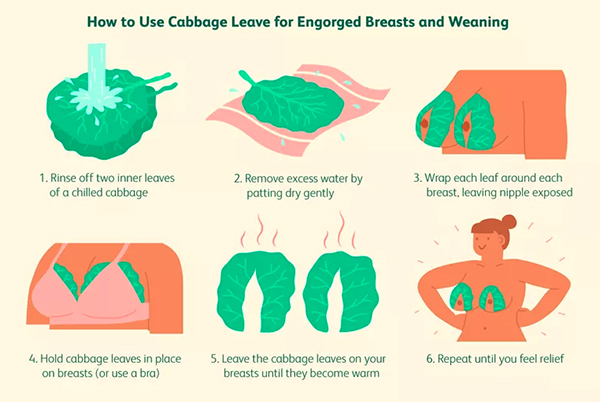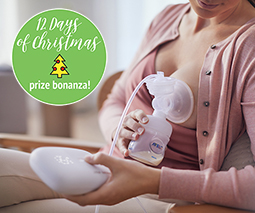Cabbage leaves for breast engorgement relief: Fact or fiction?

There’s something really incredible that happens to your body in those first days after giving birth. It’s something you know is going to happen. It’s mentioned all the time. But when it happens, it is gob-smacking.
Your milk comes in.
Before I had babies, I assumed that this meant that my breasts would be magically filled with milk to feed my newborn baby. And this is, of course, exactly what does happen. Except that the reality is somehow so much more! There was colostrum there at birth to feed my baby and this all felt quite manageable – we were getting breastfeeding sorted nicely.
And then around day three, my modest B cup breasts started to pump up visibly from all the milk that was arriving on the scene. And there was so much of the stuff! My breasts seemed to start up around my shoulder blades. It was unnerving. They were hot and veiny and very very firm. They were like two strange animals strapped to my chest and I didn’t know what to do with them – and my tiny newborn certainly didn’t know what to do with them either.

Breasts of plenty
With so much milk, and a little baby who seemed to be snacking at the breast, it was inevitable that I ended up with engorged breasts. Breast engorgement occurs when your breasts are overly full of milk, painfully so. It is the result of increased blood flow to the breasts, which helps them to make plenty of milk. The breasts become tender, lumpy and very firm, making it hard for your baby to latch on to breastfeed. Breast engorgement is common when your milk first comes in during the first days after birth.
I have breast engorgement – now what?
There are a number of ways you can address breast engorgement while you work to get breastfeeding established:
- Apply a warm face washer over your breasts, or take a warm shower, before offering a feed – this will encourage your milk to let down
- Massage your breasts while you nurse your baby
- If your baby is having trouble latching on because of the fullness of your breasts, try hand expressing a little milk from the breast before you feed to slightly soften the breast
- Feed your baby for as long as she is happy to be at the breast
- Alternate breasts at each feeding so your baby drains the breast and empties your supply of milk – this will help your breasts to regulate the supply
- Apply a cold compress to help with the pain and swelling
- Apply chilled cabbage leaves to your breasts to reduce pain and swelling
Cabbage leaves: fact or fiction?
It may sound like a crazy old wives’ tale, but many scientific studies have shown that placing green cabbage leaves on your sore, hot breasts works to bring relief from engorgement. It works so well, if fact, that there are cabbage usage instructions to avoid diminishing your milk supply entirely.

Image: www.verywellfamily.com
How to use cabbage leaves
Firstly, invest in a whole green cabbage (red cabbage will work as well but may stain your skin as it warms) and store it in the fridge. While cold cabbage leaves are soothing, room temperature cabbage leaves will work just as well.
- Remove the tough outer leaves, then peel off two inner cabbage leaves – they should be handily cup-shaped.
- Wash the leaves and pat them dry.
- Cut the white stem from the middle of each leaf, being careful to keep the leaf as one piece.
- Lay the cabbage leaf on your breast, wrapping the cut area around your nipple so it’s not covered.
- Keep the leaves in place for about 20 minutes or until they become warm – you can either take this time to lie down and rest, or put a bra on to keep the leaves in place. You may leak milk as your breast becomes softer – this is completely normal.
- Throw the wilted leaves away once you have removed them from the breast.
- Repeat 2-3 times a day using fresh leaves each time.
Having used the cabbage leaf remedy myself, I can highly recommend it. Yes, I moved around in a fog of cooked cabbage odours, but it was extremely effective and I only needed to do it for a couple of days and by then, my milk supply had sorted itself out.
This too shall pass
Breast engorgement is uncomfortable but it should pass in a couple of days. Ultimately your breasts will work out the supply-and-demand needs of your baby and everything in the boob department will settle down. While breast engorgement is most common in the early days of breastfeeding, it can occur at any time – so take particular care of your breasts when you or your baby are unwell, when you are experiencing a change to the feeding routine, and when you are weaning your baby from the breast.
If your breasts continue to feel really uncomfortable, it’s best to see your medical health professional for advice.









